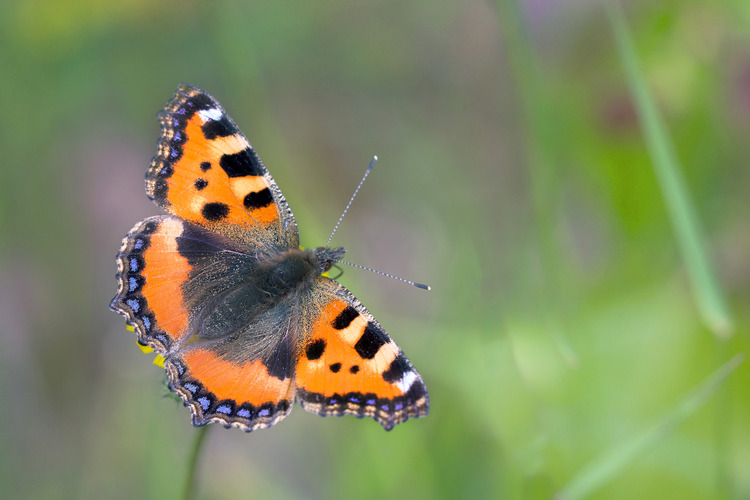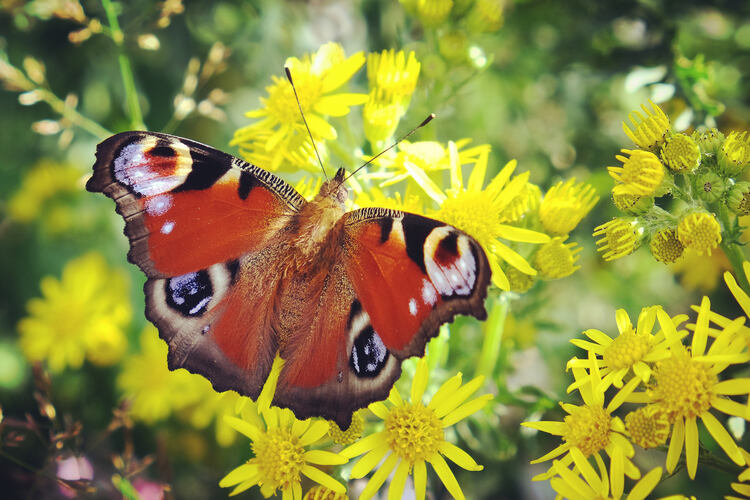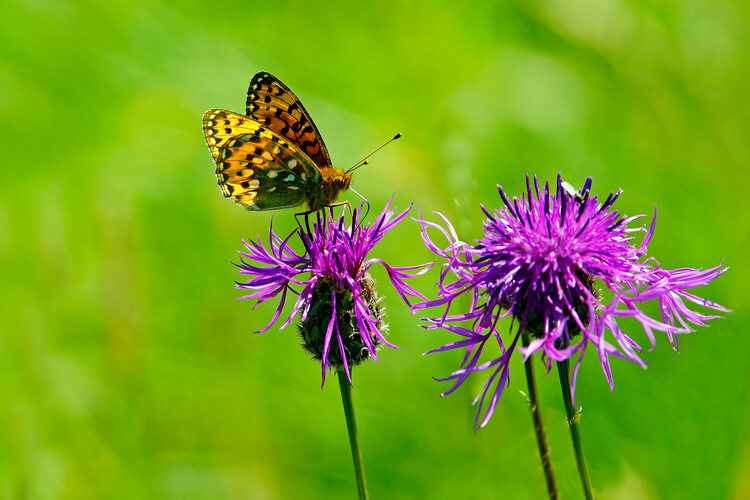
Britain’s butterflies are in trouble, but helping them is something almost all of us can do wherever we live
By
Summer is a wonderful time of year. Barbeques, beach days, picnics, festivals, holidays and, not forgetting, butterflies. Even if you’ve never really taken all that much notice of insects you cannot have failed to notice the multi-hued butterflies who flap around parks, gardens and woodlands when the days get long and hot.
The first butterflies (often sulphur-yellow, brimstone butterflies) emerge around March-April and are visible until the first fingers of winter start to wrap around autumn. But, being true creatures of the summer sun, the greatest number and variety of butterflies are visible between June to early-September. In fact, if any animal were to symbolise summer it would be butterflies.
Sadly, though butterflies are in serious trouble in the UK with some species, such as the small tortoiseshell suffering a massive 82 per cent decline since 1976 with habitat damage and destruction, pesticide use, pollution and climate change all being to blame
This means that Britain’s butterflies need our help. And, fortunately, it’s pretty simple for all of us to do our bit to help butterflies. You don’t even really need a garden or to live in the countryside. With just a windowsill you can attract and aid butterflies.
To do this you need to provide suitable flowering plants for the adults to gather nectar from and the appropriate food plant for the larva (caterpillars).

Before we get started on specific flowering plants for butterflies though here are a few general butterfly gardening tips.
General tips
- Butterflies are natural-born sunbathers – the more sun and warmth, the happier the insect is. So, when it comes to where to place your butterfly plants, choose a sunny, wind-sheltered spot.
- Mix it up. Try and provide as many butterfly plants as possible because, just butterflies can be pretty fussy eaters and what pleases one might make another turn their nose up (well, it would if they had noses, but they don’t. Instead, they smell through their feet). Place the same types of plant together in blocks.
- This is super important one. Don’t use insecticides and pesticides as these kill butterflies as well as many other useful insects.
- Select plants that flower at different times from one and other so as to ensure a constant food supply throughout the summer.
A butterfly’s favourite dinner

- Buddleia Also known as the Butterfly Bush, this distinctive and quite large bush has deep purple or white cone like flowers and an intense aroma. It will grow pretty much anywhere (it’s commonly seen around waste grounds) and flowers from July to early September. They do grow big – and fast – so you need a bit of space.
- Lavender. Immediately associated with Mediterranean climates, lavender, which has delicate purple-blue flowers thrives in a sunny, sheltered position in well-drained soil. Plant in April or May. It will also grow well in pots so could be grown on a windowsill.
- Verbena bonariensis. Stems up to a metre tall support heads of lilac-purple flowers from August to October. Easy to grow in well-drained soil, these lilac-coloured flowers are a favourite with butterflies but they can struggle with the British climate (don’t we all…) so is better suited to sheltered, sunny areas on the south.
- Perennial Wallflower (Bowles Mauve). Beautiful flowers grow in great profusion throughout the spring and summer and are a big hit with spring butterflies looking to get their energy reserves up. Plant in well-drained soil.
- Marjoram (Oregano). Another great plant to grow in pots or if you only have limited space. The white, pink and purple flowers bloom from June to September.
Don’t forget the kids

Now the parents have had dinner it’s time to feed the kids. Butterflies, of course, aren’t born butterflies but caterpillars. Like many human children, during this larval stage they are very fussy eaters and what’s more they normally prefer to eat something different to mum and dad. Unfortunately for anyone who wants to help butterflies many of the plants caterpillars eat aren’t exactly favourites with gardeners. If you have the space then set aside a small area of ground and let it all go a little wild. The plants to try and encourage include the following.
- Lady’s smock is chewed on by orange tip larva
- Nasturtium is favoured by the young of white butterflies (green-veined, large white and small white)
- Thistles get painted lady caterpillars all excited
- Nettles Sorry but stinging nettles are very popular with many butterfly larva, but in particular red admirals, peacocks, small tortiseshells and commas.
- Buckthorn and alders are every brimstone caterpillars absolute favourite dish
- Ivy and holly pleases holly blues.
House rental
Some butterflies hibernate over the winter and caterpillars need a quiet, safe place to pupate as they turn into butterflies so leave out piles of twigs and broken flowerpots for them to move into.
Related articles:



